XA2D-1 Skyshark
Early Version
Advanced Kit
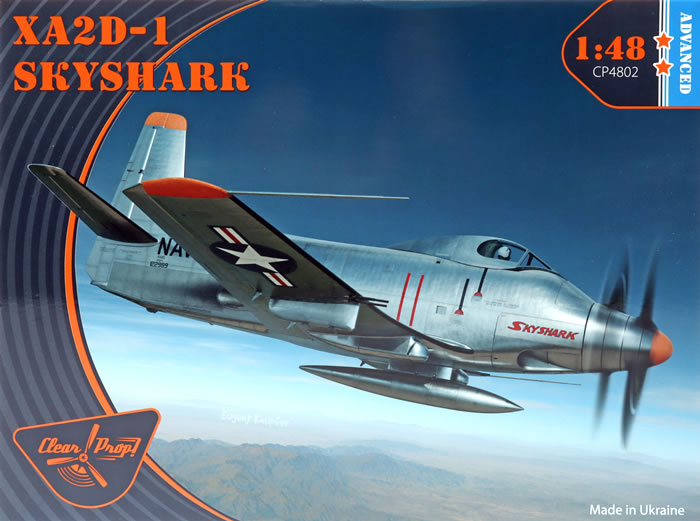
Clear Prop!, 1/48 scale
S
u m m a r y : |
Description and Item No.: |
Clear Prop! Kit No. CP4802 - XA2D-1 Skyshark Early Version Advanced Kit |
Contents and Media: |
198 parts in dark grey plastic: three parts in clear; one photo-etched fret with 83 parts; one clear printed acetate film; one self-adhesive masking sheet; two decal sheets with four marking options. |
Price: |
55 Euro plus shipping available online from Clear Prop!
£58.49 EU Price (£48.74 Export Price) plus shipping available online from Hannants |
Scale: |
1/48 |
Review Type: |
First Look |
Advantages: |
Lovely crisp and subtle surface textures; high level of detail; useful options including folded or straight wings, poseable canopy and optional seats; includes resin and photo-etched parts. |
Disadvantages: |
Some may not like the rivetting. |
Recommendation: |
Clear Prop! has delivered an impressive model of this imposing subject. With poseable airbrake, undercarriage, wings and propeller assembly you'll have plenty of options for configuring your Skyshark. Detail is excellent and I like the crisp, fine surface textures. This is an impressive effort for Clear Prop's debut 1/48 scale kit. I can't wait to see what else they have in store for us in this popular scale! |
Reviewed by Brett Green

On 25 June 1945, the Bureau of Aeronautics (BuAer) asked Douglas Aircraft for a turbine-powered, propeller-driven aircraft.
Three proposals were put forth in the next year and a half: the D-557A, to use two General Electric TG-100s (T31s) in wing nacelles; the D-557B, the same engine, with counter-rotating propellers; and the D-557C, to use the Westinghouse 25D. These were cancelled due to engine development difficulties, but BuAer continued to seek an answer to thirsty jets.
On 11 June 1947 Douglas received the Navy's letter of intent for a carrier-based turboprop. The need to operate from Casablanca-class escort carriers dictated the use of a turboprop instead of jet power.
While it resembled the AD Skyraider, the A2D was different in a number of unseen ways. The 5,100-equivalent shaft horsepower (3,800 kW) Allison XT-40-A2 had more than double the horsepower of the Skyraider's R-3350. The XT40 installation on the Skyshark used contra-rotating propellers to harness all the available power. Wing root thickness decreased, from 17% to 12%, while both the height of the tail and its area grew.

Engine-development problems delayed the first flight until 26 May 1950, made at Edwards Air Force Base by George Jansen.
Navy test pilot Cdr. Hugh Wood was killed attempting to land the first prototype XA2D-1, BuNo 122988, on 19 December 1950, on its 15th flight.
Additional instrumentation and an automatic decoupler was added to the second prototype, but by the time it was ready to fly on 3 April 1952, sixteen months had passed, and with all-jet designs being developed, the A2D program was essentially dead. Total flight time on the lost airframe was barely 20 hours.
Allison failed to deliver a "production" engine until 1953, and while testing an XA2D with that engine, test pilot C. G. "Doc" Livingston pulled out of a dive and was surprised by a loud noise and pitch up. His windscreen was covered with oil and the chase pilot told Livingston that the propellers were gone. The gearbox had failed, but Livingston successfully landed the airplane.
The A4D Skyhawk was ready to fly by the summer of 1954, and escort carriers were being mothballed, so that time had run out for the troubled A2D program.
Twelve Skysharks were built, two prototypes and ten pre-production aircraft. Most were scrapped or destroyed in accidents, and only one has survived.*
* Historical summary courtesy of Wikipedia
There have only ever been two Skyshark kits produced in 1/48 scale. The first was Microscale's resin kit from 1975. This was a crude resin model with no undercarriage. More worthy was Dynavector's A2D-1 vacform model with white metal detail parts and decals, relesed in 2003. Dynavector's Skyshark was rightly lauded as one of the best vacuum formed kits ever.
Clear Prop! has now brought this distinctive subject to a wider audience with the very first 1/48 scale injection moulded plastic Skyshark. It is also Clear Prop's debut release in this scale.
Clear Prop's 1/48 scale XA2D-1 Skyshark Early Version Advanced Kit comprises 198 parts in dark grey plastic, three parts in clear, one photo-etched fret with 83 parts, one clear printed acetate film, one self-adhesive masking sheet and two decal sheets with four marking options.
The parts are moulded in dark grey plastic. The texture of the plastic is very smooth and sprue attachments are narrow.
Surface details are fine, crisp and consistent. The fuselage and wings are adorned with rows of delicately recessed rivets. When I first opened the box I thought that I could see a stressed oil canning effect, but I think this was an illusion that can be credited to the riveting.
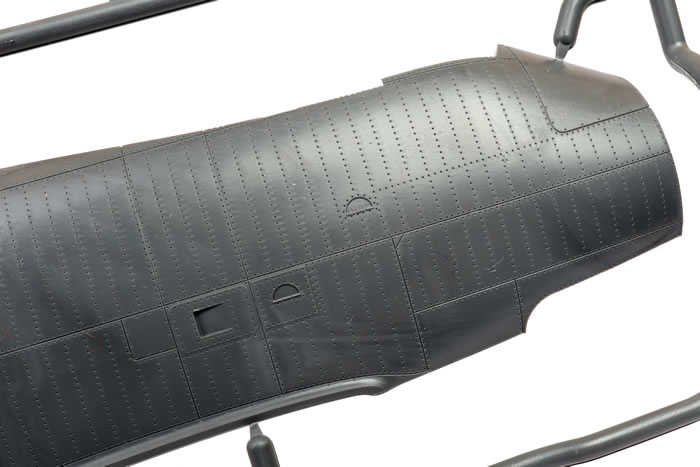
Looking at the real aircraft, there are vertical lines that may be stress marks or oil canning. I know that there will be some who won't like the extensive riveting, but I think it is an effective and interesting way to capture the surface texture of the real aircraft.
Two different pilot seats are included. One is a typical WWII-style bucket seat for the earliest option, and the other is an ejection seat. The early seat is plastic, while the ejector seat made up from three resin parts plus photo-etched details. Casting of the resin parts is perfect on my sample. You'll need to take care trimming away the fine resin flash between the frames of the seat support though.
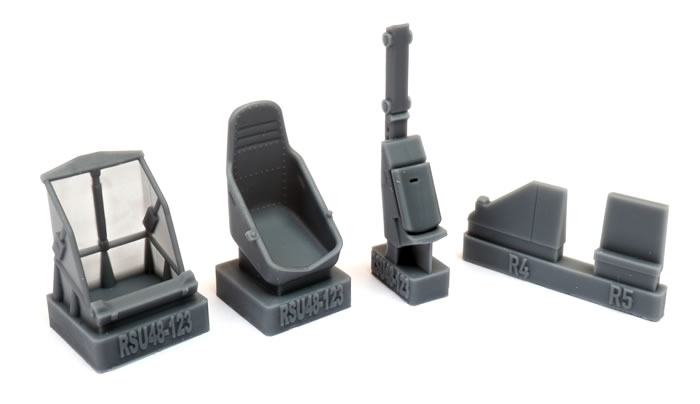
There is plenty of other detail in the cockpit with photo-etched lap and shoulder straps plus a bunch of other small parts.
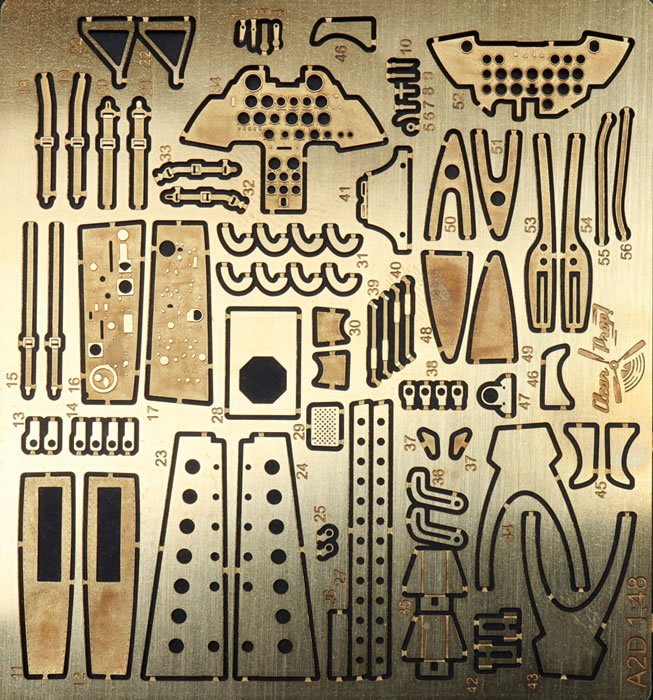
The instrument panel is a sandwich with a plastic back, dials in the middle and a photo-etched front panel. A choice of decals or printed acetate instrument dials is offered.
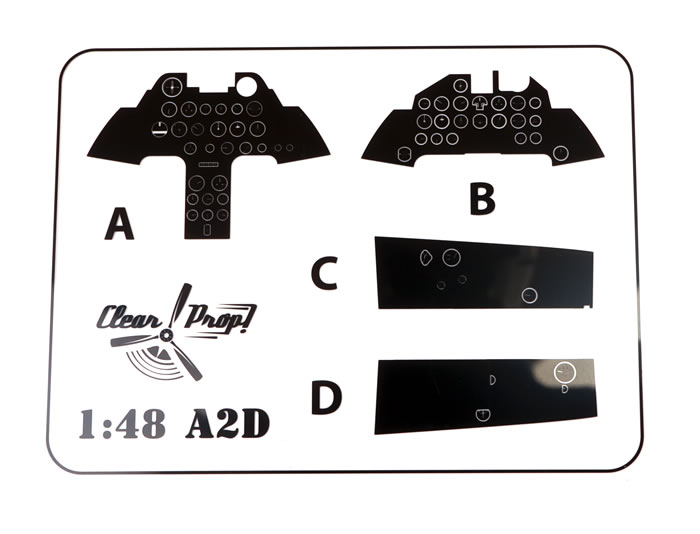
Note that you will have to decide whether your canopy will be open or closed by Step 14, where you have to choose between opening up one of two slots on the rear cockpit deck.
Clear Prop supplies full intake and exhaust ducting. Each of the four ducts are split lengthwise into two pieces.
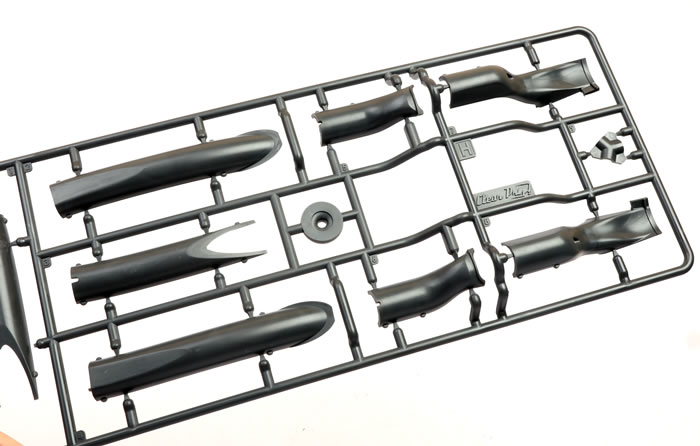
Control surfaces including flaps are all separate parts and may be posed to taste. The air brake and the tail landing gear are really well detailed with plastic and photo-etched parts. Sadly, I haven't been able to find any photos of the air brake open on the ground. I'm not even sure that it would be physically possible due to the Skyshark's low tail-dragger configuration.
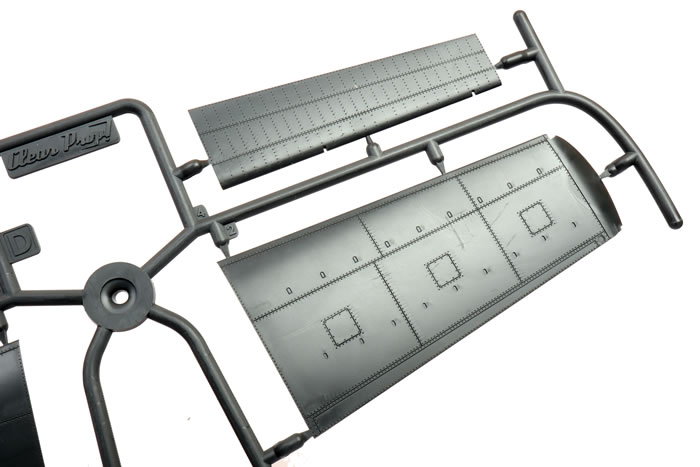
Three ordnance racks are included but only a single centreline drop tank is supplied. Four single rocket stubs are also offered as an option for the lower outer wing panels but rockets are not included.
The outer wing panels are separate sub-assemblies and may be posted flat or folded thanks to the use of different hinge parts. Alternative hinges are also supplied to depict the landing flaps raised or lowered. Outer wing panel struts are supplied to support the folded wings.
The six-blade contra-rotating propeller provides separate parts for the front and rear rows so you can offset the two sets of propeller blades. It looks like they will have to be glued in place though.
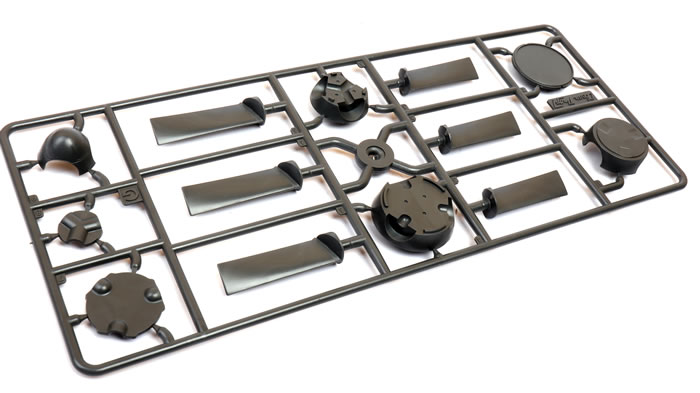
The canopy pieces are nice and clear.
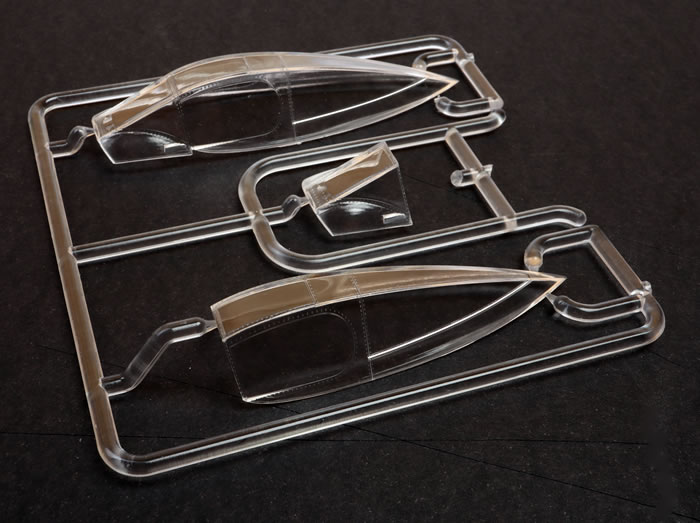
A single clear part is included for the closed canopy, and two clear parts will be used if you wish to pose your canopy open.
Self-adhesive white vinyl masks are provided for painting the canopy frames.
Instructions are generally clear and laid out over 47 steps in a 16 page, folded A4 paper booklet.
The marking guide is in full colour and colours are called out throughout using MIG paint numbers. It might have been nice to have a few other paint brands cross-referenced too.
Markings
The colours and registration of the decals look good.
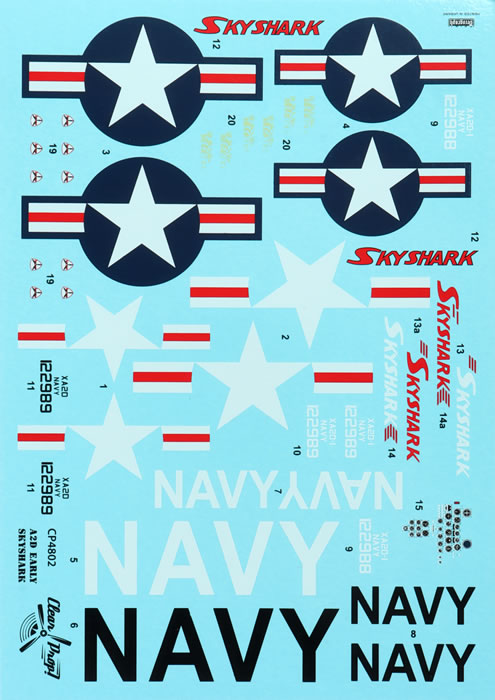
Four marking options are offered, two in bare metal and two in Gloss Sea Blue.
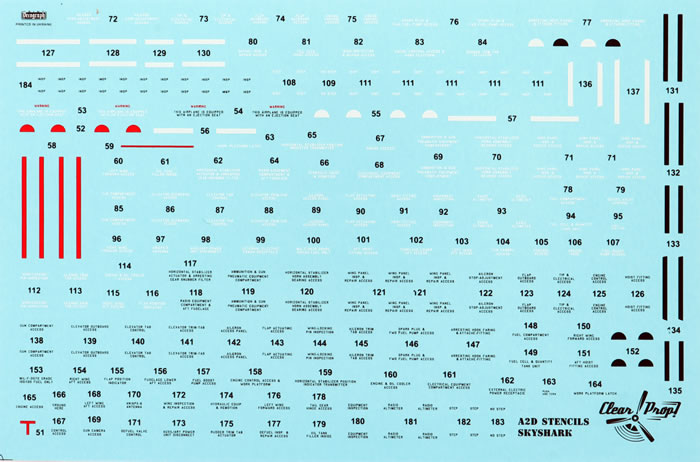
A second decal sheet supplies stencil markings in black and in white.
Clear Prop! has delivered an impressive model of this imposing subject.
With poseable airbrake, undercarriage, wings and propeller assembly you'll have plenty of options for configuring your Skyshark.
Detail is excellent and I like the crisp, fine surface textures.
This is an impressive effort for Clear Prop's debut 1/48 scale kit. I can't wait to see what else they have in store for us in this popular scale!
Thanks to Clear Prop! for the sample
Text and Images Copyright © 2021 by Brett Green
Page Created 9 February, 2021
Last updated
10 February, 2021
Back to HyperScale Main Page
Back to Reviews Page
|
Home
| What's New |
Features |
Gallery |
Reviews |
Reference |
Forum |
Search